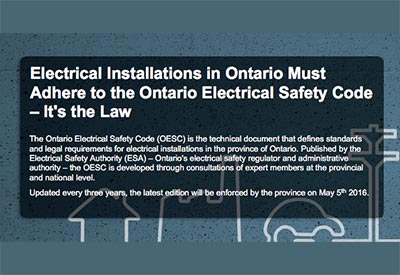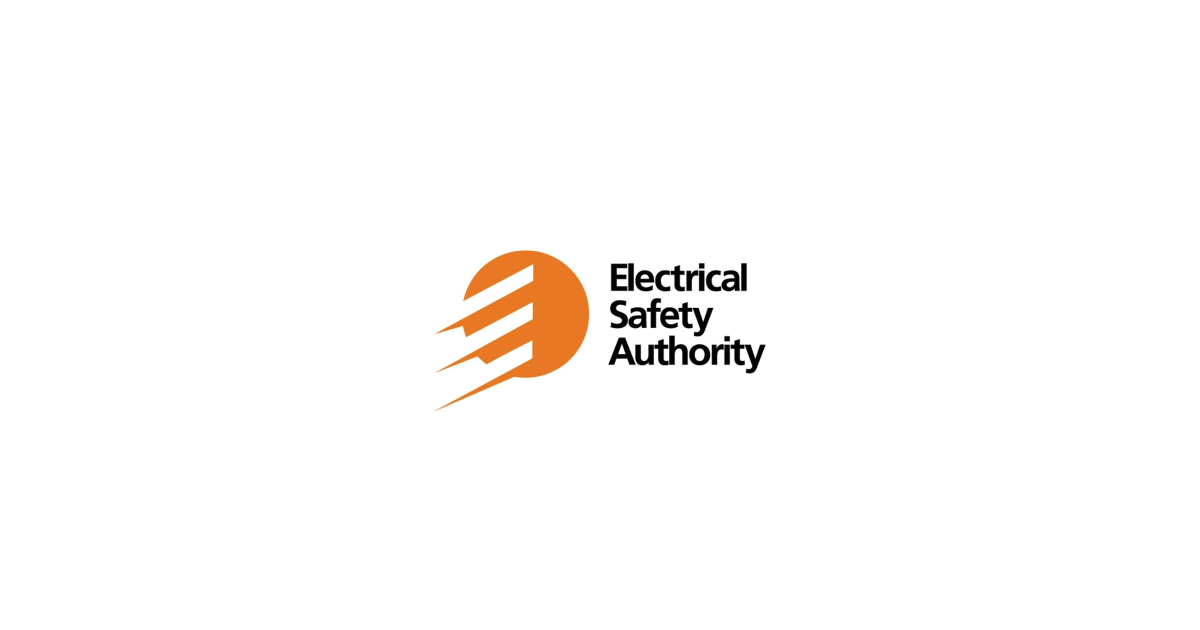Latest Update to Ontario Electrical Safety Code Includes New Safety Requirements

May 18, 2016
The latest edition of the Ontario Electrical Safety Code (OESC)includes important new safety requirements based on key learnings from safety incident data. Three significant changes include the following:
• expanded requirements for arc fault circuit interrupters (AFCIs). Circuits that supply bedroom receptacles have been required to be protected by AFCIs since 2002. Analysis of data from the Ontario Office of the Fire Marshal,conducted by the Electrical Safety Authority, concluded that AFCI protection could reduce residential electrical distribution fires by up to 71%. The new OESC expanded the requirements to include most other areas of the home, including outdoors and requires “combination type” AFCIs that protect wiring within house walls and connected electrical cords against the unwanted effects of arcing.
• new guidelines for safe clearances between light fixtures and combustibles, in response to several fires in Ontario in the past five years caused by light fixtures coming too close to flammable materials (which includes shelving.) The previous OESC required a shade or guard for lights installed where combustibles are stored. The new OESC goes beyond storage areas to other situations where combustibles may exist, such as kitchen cabinetry close to pot lights. It provides guidance for minimum clearances that will minimize any potential overheating to combustible materials surrounding light fixtures.
• wiring at non-commercial docks, to address hazards associated with electric shock drowning, which are present not just at commercial facilities but also on private docks. Electric shock drowning occurs when a person comes into contact with water that has been energized from faulted electrical products or installations. The new OESC states that receptacles on commercial docks and marinas as well as cottage docks are required to be protected by ground fault circuit interrupters (GFCIs). Feeder circuits installed in or on a cottage boathouse or dock are also required to be protected by GFCIs. GFCIs can cut the power before a dangerous or even fatal shock occurs as a result of electricity coming into contact with water.
Other additions to the new OESC include changes for renewable energy installations, including requirements for rapid shutdown for solar, and specifics on the location of electrical hook-ups for recreational vehicle (RV) parking, to reduce unsafe use of extension cords and harmonize with the U.S. National Electrical Code.
In addition to prescriptive amendments and rules regarding instructions for safe electrical installations, the OESC also contains requirements regarding electrical permits. Specifically, almost all electrical work requires a permit. In Ontario, only a licensed electrical contractor is legally allowed to be hired for electrical work, and only homeowners or occupants are able to conduct electrical work in their own home.
To learn more about Ontario’s legal requirements for electrical installations, for frequently asked questions about the Ontario Electrical Safety Code, or to purchase a copy, visit www.esasafe.com/2015oesc.
Image courtesy of sscreations at www.FreeDigitalPhotos.net.

















